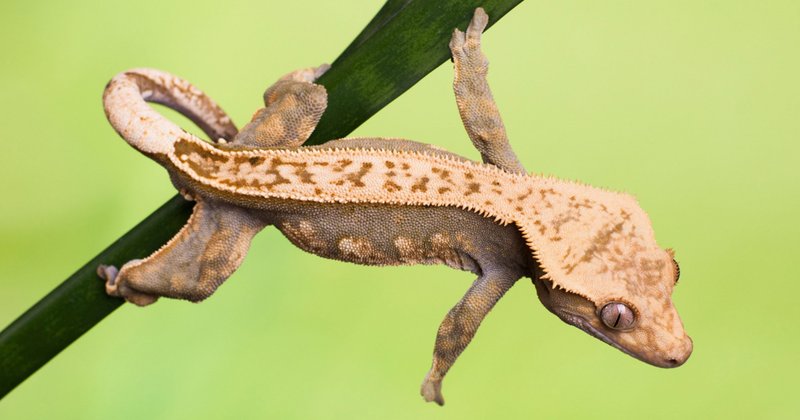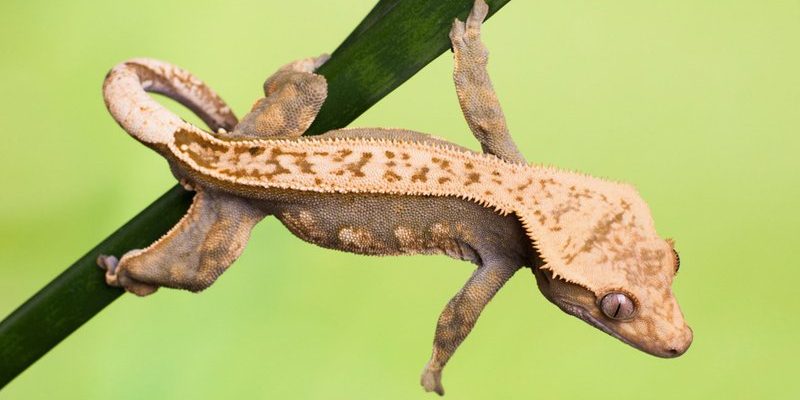
Identifying a crested gecko in the wild isn’t just about knowing what they look like, though that’s a big part of it. The thrill of finding one is like a treasure hunt—you’re searching for a specific clue in the vast, lush landscape. In this guide, I’ll walk you through the steps to spot these critters and share some helpful tips along the way. So, grab your sense of adventure, and let’s dive right in!
Where to Find Crested Geckos
To identify a crested gecko, you first need to know where to look. Think of their habitat as the ultimate hide-and-seek playground. These geckos are native to New Caledonia, an island nation in the South Pacific. They love to dwell in warm, humid areas, often hanging out in trees and shrubs.
When exploring, keep an eye out for rainforests, dry forests, and even rocky outcrops. These geckos are pretty good climbers, so look up! You might find them perched on branches or nestled among leaves. And remember, they’re nocturnal, so your best chance of spotting one is during late evening or at night when they come out to play. Just don’t forget your flashlight—this is a nighttime adventure!
Seasonal Considerations
You might be wondering if there’s a best time to search for crested geckos. Honestly, they can be found year-round, but their activity levels do vary with the seasons. During the breeding season, which usually peaks in spring, you’ll find them a bit more active. Females may be spotted displaying their vibrant colors to attract mates, so this could be a prime opportunity for a sighting.
However, even outside of spring, keep your eyes peeled. After a rainfall, for instance, they might be more visible as they venture out to bask in the sun. So, if you’re planning a trip, check the weather forecast—it can really make a difference in your chances of spotting these elusive reptiles!
Physical Characteristics of Crested Geckos
Once you’ve found a promising area to explore, it’s time to focus on identifying the crested gecko. These lizards have several distinct physical traits that make them stand out from other species. First off, their most noticeable feature is the crest that runs from their eyes down to their tails. It’s like they’re sporting a funky hairstyle!
Next, pay attention to their colors. Crested geckos come in a variety of shades, including brown, green, yellow, and even orange. Some have unique patterns, like spots or stripes, giving them individual flair. When you see a gecko, take a moment to appreciate its coloration—this can vary widely depending on their environment and mood.
Lastly, let’s not forget their size. Adult crested geckos typically measure between 7 to 10 inches long. Their bodies are quite robust, with a generally thick tail. So, if you spot a lizard that seems a bit chubby but not excessively long, it could very well be a crested gecko.
Behavioral Traits
Observing behavior is another way to confirm whether you’ve got a crested gecko on your hands. These lizards are known for their curious and sometimes playful nature. If you see a gecko hanging out on a branch, it might be doing the “head bob”—a common display that signals curiosity or a warning.
Crested geckos are also great jumpers. If you startle one, you might see it leap dramatically from its perch to another branch—almost like a little acrobat! This behavior is a fun giveaway, as many other lizards tend to scurry away instead.
Keep an eye out for how they interact with their surroundings too. They’re often seen exploring their territory, climbing around, and poking their heads into nooks and crannies. All of these little quirks add to the charm and make identifying them a bit easier!
Listening for Their Calls
You might be surprised to learn that crested geckos can make sounds! While they aren’t known for loud calls, these little guys can produce soft vocalizations like chirps or clicks. If you’re quietly observing the trees at night, listen carefully. You may hear a faint sound that could lead you to a hidden gecko.
These vocalizations often occur during mating season or when they feel threatened. So, if you hear a soft chirp nearby, it might just be a crested gecko letting you know it’s there. This added auditory dimension can heighten your senses as you search for them in the wild.
Taking Notes and Photography
If you’re out identifying crested geckos, consider bringing a notebook or a camera. Jotting down notes about where and what you observe can enhance your experience. Not only does this help you remember details about the geckos you find, but it can also serve as a reference for future trips.
When photographing them, keep your distance to avoid scaring them away. Use a zoom lens if you have one, and try to capture their natural behavior. Be patient and let them come to you—this will help you get the best shots. Plus, it’s a great way to share your adventures with friends!
Conservation Considerations
As you embark on this exciting journey, it’s crucial to remember the importance of conservation. Crested geckos are facing challenges in their natural habitats due to deforestation and habitat destruction. When observing these creatures, ethics matter.
Make sure you stick to paths and avoid disturbing their environment. It’s tempting to get up close to snap a photo, but always prioritize their well-being. Maintain a respectful distance, and never try to catch or handle them. This way, you can enjoy the thrill of spotting a crested gecko while helping to protect their home.
Learning More About Crested Geckos
As you continue your journey of discovering crested geckos, consider joining local reptile or wildlife groups. These communities often organize outings and may offer opportunities for guided tours with experienced naturalists. Learning from others can deepen your appreciation of these unique creatures.
There’s a rich world of information available online too. Plenty of resources can help you understand more about their behavior, diet, and habitat. Diving into this knowledge will enhance your experience and may even spark a passion for herpetology — the study of reptiles and amphibians!
Identifying a crested gecko in the wild is a thrilling adventure that combines exploration, observation, and a deep appreciation for nature. From knowing where to look to recognizing their distinct physical traits and behaviors, each step brings you closer to spotting these charming reptiles. As you prepare for your next journey, remember to keep your eyes peeled, listen closely, and respect their environment.
Happy gecko hunting! The next time you find yourself in a lush, tropical area, use these tips to help you spot a crested gecko. Embrace the journey, connect with nature, and enjoy every moment. Who knows? You might just make a new friend in the wild!

